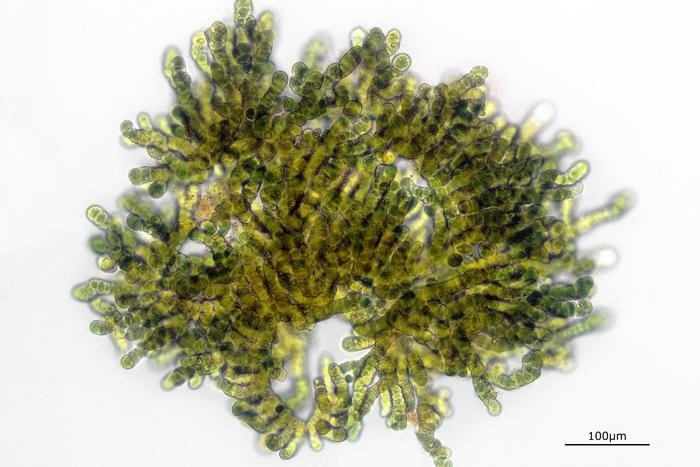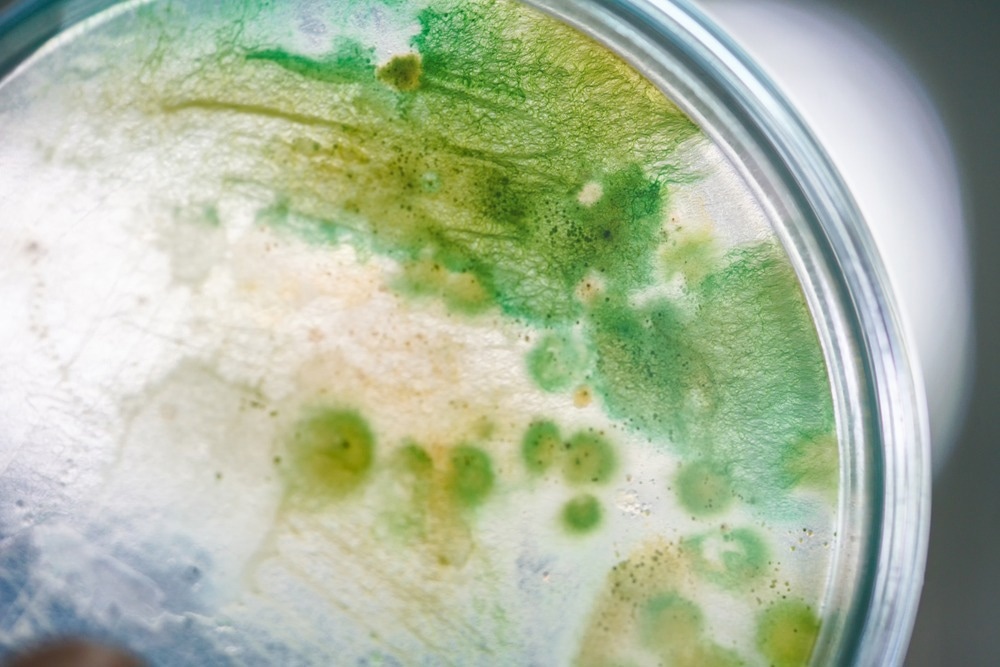The cyanobacterium Aetokthonos hydrillicola has been found to produce not one, but two highly potent toxins. In the latest issue of the journal Proceedings of the National Academy of Sciences (PNAS), an international research team led by Martin Luther University Halle-Wittenberg (MLU) and Freie Universität Berlin has revealed the existence of the second toxin, which had remained unidentified until now.
 Colony of A. hydrillicola. Image Credit: Lenka Štenclová
Colony of A. hydrillicola. Image Credit: Lenka Štenclová
Even at low concentrations, this toxin has the ability to damage and destroy cells, and it bears similarities to substances currently used in cancer treatment. It is worth noting that two years ago, the same research team established that the first toxin produced by this cyanobacterium is responsible for a mysterious disease observed among bald eagles in the USA.
Aetokthonos hydrillicola presents a significant challenge for researchers. It is notoriously hard to cultivate and produces one of its toxins only under specific conditions. Moreover, the fact that it produces two toxins with distinct chemical compositions is highly unusual. Typically, cyanobacteria are known to produce only one toxin. In 2021, A. hydrillicola was identified as the source of aetokthonotoxin
Professor Susan Wilde from the University of Georgia (USA) and Professor Timo Niedermeyer were credited with this discovery. Professor Niedermeyer was previously affiliated with MLU until July 2023 and has since joined the research team at Freie Universität Berlin.
This toxin discovery solved a longstanding mystery that had baffled scientists for decades: it is responsible for triggering the disease known as vacuolar myelinopathy (VM) among bald eagles in the United States.

Image Credit: Choksawatdikorn/Shutterstock.com
VM leads to the formation of holes in the brain, causing the affected birds to lose control over their bodies. The groundbreaking findings were featured as a cover story in the journal Science at the time, and the international research team received numerous awards for their remarkable work.
Markus Schwark from MLU played a pivotal role in providing evidence of the second, previously unidentified toxin and meticulously characterizing its properties.
We were very surprised when we worked out the structure of this toxin. It resembles toxins that have been found in marine cyanobacteria. They are even already being used in cancer-cell killing drugs.”
Markus Schwark, Martin Luther University Halle-Wittenberg
Drawing inspiration from the bacterium and the similarities with known toxins, the researchers have christened the newly uncovered toxin as “aetokthonostatin.”
Scientists had harbored suspicions about the existence of this toxin for some time.
During one of our first investigations over ten years ago, we discovered that an extract of the cyanobacterium is highly toxic for cells. We assumed that this effect points to aetokthonotoxin that triggers the avian disease.”
Timo Niedermeyer, Professor, Freie Universität Berlin
However, more extensive investigations unveiled an intriguing revelation: the bird toxin, aetokthonotoxin, primarily causes minor direct cell damage. Surprisingly, extracts devoid of aetokthonotoxin content still exhibited cell-destructive properties, even at extremely low concentrations. This discovery strongly suggested that A. hydrillicola was indeed producing another highly potent toxin
Under the leadership of Dr Jan Mareš, a team from the Czech Academy of Sciences successfully identified the specific genes within the cyanobacterium responsible for the synthesis of the newly discovered toxic molecule. Given the resemblance of this compound to substances employed in anticancer medications, these findings hold promise for the development of novel cancer-fighting drugs.
Additionally, the presence of this cyanobacterium in American lakes and rivers that supply drinking water networks is a cause for concern. As a result, the scientists recommend increased and more frequent monitoring of these waters for the presence of Aetokthonos hydrillicola and its two toxins to mitigate potential risks to human health.
Source:
Journal reference:
Schwark, M., et al. (2023) More than just an eagle killer: The freshwater cyanobacterium Aetokthonos hydrillicola produces highly toxic dolastatin derivatives. Proceedings of the National Academy of Sciences. doi.org/10.1073/pnas.2219230120.